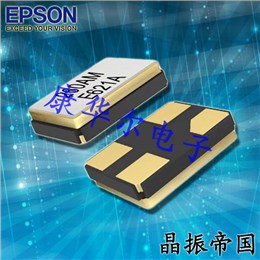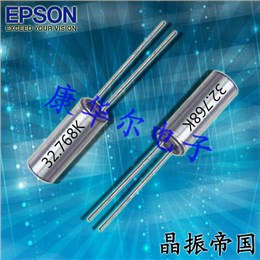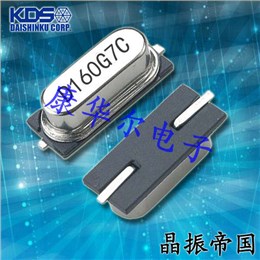ECLIPTEK CRYSTAL QUARTZ老化测试呈现,Ecliptek是一家小有名气的元器件供应商,秉持着创新的设计理念,以及对于品质的不懈追求,使得日蚀公司能够在偌大的市场之中发现巨大的价值,同时又将有价值的石英晶振产品贡献于市场之中,并得到广大用户的热烈反响,正是这种对于产品极致的追求使得日蚀公司走向不一样的路途,成就非凡的日蚀公司。
Eclitek是频率控制市场公认的市场领导者。Ecliptek品牌专门生产可快速转动的可编程晶体和MEMS振荡器设备,可加快上市时间并消除长交付周期。Ecliptek由Abracon提供动力,该公司提供最新的技术设计支持和全球供应链灵活性,以解决客户当今的独特挑战。
石英晶体的“老化”导致频率随时间变化,可能必须采取这种影响由客户在设计电路时考虑取决于需要实现。石英老化的主要原因有两个晶体,一个是由于传质,另一个是因为强调.
质量转移
设备封装内的任何不希望的污染都可能将物质转移到晶体中或从晶体中转移出来,导致将改变频率的石英坯的质量设备的。例如,用于安装石英坯件会产生“排气” 会在惰性气体中产生氧化物质密封的水晶包装里的空气生产过程必须得到很好的控制。理想情况下制造方法尽可能干净,以消除任何效果并给出良好的老化结果。
强调
这可能发生在石英晶体的各个组件中从石英坯料的加工环氧树脂安装粘合剂,晶体安装结构以及器件中使用的金属电极材料的类型。加热和冷却也会由于不同膨胀系数。系统中的应力通常随着系统放松而随时间变化,这可能导致频率的变化。
实践中的老龄化
当观察晶体的示例老化测试结果时,可以看出,频率的变化通常是在第一年最伟大,并随着时间的推移而衰退。它必须然而,请注意,例如,如果指定了设备每年最大±5ppm;这并不意味着衰老5年后为±5ppm×5年,即±25ppm。在实践中,示例的±5ppm老化装置可能仅为±1ppm至运行第一年±2ppm,然后减少随后几年。对于10年内最大±10ppm的贴片石英晶振老化,通常使用通用“指南”尽管在现实中它通常比这个要少得多。是的甚至无法预测设备的确切老化在同一时间由同一批石英将表现出略微不同的老化特性。
生产过程必须从零件到部分,来自石英坯料的制造,电极尺寸及其位置,用于安装石英及其固化热剖面,都有轻微影响在频率上。设备可能老化为负或正取决于内部原因一个批次往往遵循类似的结果。一般来说在90%以上的制造零件中,老化效应是负面的。
加速老化
频率调整
制造商零件编号
供应商
描述
工作温度
E1SJA18-14.31818M TR
Ecliptek晶振
CRYSTAL 14.31818MHZ 18PF SMD
-40°C ~ 85°C
E1SJA18-6.144M TR
Ecliptek晶振
CRYSTAL 6.1440MHZ 18PF SMD
-40°C ~ 85°C
E1SJA18-28.63636M TR
Ecliptek晶振
CRYSTAL 28.63636MHZ 18PF SMD
-40°C ~ 85°C
E1SJA18-13.000M TR
Ecliptek晶振
CRYSTAL 13.0000MHZ 18PF SMD
-40°C ~ 85°C
E1SJA18-19.6608M TR
Ecliptek晶振
CRYSTAL 19.6608MHZ 18PF SMD
-40°C ~ 85°C
E1SJA18-9.8304M TR
Ecliptek晶振
CRYSTAL 9.8304MHZ 18PF SMD
-40°C ~ 85°C
E1SJA18-32.000M TR
Ecliptek晶振
CRYSTAL 32MHZ 18PF SMD
-
EA2025MA10-16.000M TR
Ecliptek晶振
CRYSTAL 16.0000MHZ 10PF SMD
-40°C ~ 85°C
EA2025MA10-32.000M TR
Ecliptek晶振
CRYSTAL 32.0000MHZ 10PF SMD
-40°C ~ 85°C
E1WCDA12-32.768K
Ecliptek晶振
CRYSTAL 32.7680KHZ 12.5PF TH
-10°C ~ 60°C
E1SJA18-18.000M TR
Ecliptek晶振
CRYSTAL 18.0000MHZ 18PF SMD
-40°C ~ 85°C
E1SJA18-20.000M TR
Ecliptek晶振
CRYSTAL 20.0000MHZ 18PF SMD
-40°C ~ 85°C
E1SJA18-14.7456M TR
Ecliptek晶振
CRYSTAL 14.7456MHZ 18PF SMD
-40°C ~ 85°C
E1SCA18-7.3728M TR
Ecliptek晶振
CRYSTAL 7.3728MHZ 18PF SMD
-40°C ~ 85°C
E1SEA18-16.000M TR
Ecliptek晶振
CRYSTAL 16.0000MHZ 18PF SMD
-20°C ~ 70°C
E1SEA18-12.000M TR
Ecliptek晶振
CRYSTAL 12.0000MHZ 18PF SMD
-20°C ~ 70°C
E1SJA18-10.000M TR
Ecliptek晶振
CRYSTAL 10.0000MHZ 18PF SMD
-40°C ~ 85°C
E1SJA18-12.000M TR
Ecliptek晶振
CRYSTAL 12.0000MHZ 18PF SMD
-40°C ~ 85°C
E1SJA18-11.0592M TR
Ecliptek晶振
CRYSTAL 11.0592MHZ 18PF SMD
-40°C ~ 85°C
E1SJA18-8.000M TR
ECLIPTEK晶振
CRYSTAL 8.0000MHZ 18PF SMD
-40°C ~ 85°C
E1SJA18-16.000M TR
Ecliptek晶振
CRYSTAL 16.0000MHZ 18PF SMD
-40°C ~ 85°C
E1SJA18-3.579545M TR
Ecliptek晶振
CRYSTAL 3.579545MHZ 18PF SMD
-40°C ~ 85°C
E1SJA18-4.194304M TR
Ecliptek晶振
CRYSTAL 4.194304MHZ 18PF SMD
-40°C ~ 85°C
E1SJA18-16.9344M TR
Ecliptek晶振
CRYSTAL 16.9344MHZ 18PF SMD
-40°C ~ 85°C
E1SJA18-5.000M TR
Ecliptek晶振
CRYSTAL 5.0000MHZ 18PF SMD
-40°C ~ 85°C
E1SJA18-13.500M TR
Ecliptek晶振
CRYSTAL 13.5000MHZ 18PF SMD
-40°C ~ 85°C
E1SJA18-9.216M TR
Ecliptek晶振
CRYSTAL 9.2160MHZ 18PF SMD
-40°C ~ 85°C
E1SJA18-12.288M TR
Ecliptek晶振
CRYSTAL 12.2880MHZ 18PF SMD
-40°C ~ 85°C
E1SJA18-4.500M TR
Ecliptek晶振
CRYSTAL 4.5000MHZ 18PF SMD
-40°C ~ 85°C
E1SJA18-15.000M TR
Ecliptek晶振
CRYSTAL 15.0000MHZ 18PF SMD
-40°C ~ 85°C
E1SJA18-4.433619M TR
Ecliptek晶振
CRYSTAL 4.433619MHZ 18PF SMD
-40°C ~ 85°C
E1SJA18-16.384M TR
Ecliptek晶振
CRYSTAL 16.3840MHZ 18PF SMD
-40°C ~ 85°C
E1SJA18-6.7458M TR
Ecliptek晶振
CRYSTAL 6.7458MHZ 18PF SMD
-40°C ~ 85°C
E1SJA18-15.360M TR
Ecliptek晶振
CRYSTAL 15.3600MHZ 18PF SMD
-40°C ~ 85°C
E1SDA18-25.000M TR
Ecliptek晶振
CRYSTAL 25.0000MHZ 18PF SMD
0°C ~ 70°C
E1SJA18-4.9152M TR
Ecliptek晶振
CRYSTAL 4.9152MHZ 18PF SMD
-40°C ~ 85°C
E1SGA18-25.000M TR
Ecliptek晶振
CRYSTAL 25.0000MHZ 18PF SMD
0°C ~ 70°C
EA2532QA18-26.000M TR
Ecliptek晶振
CRYSTAL 26.0000MHZ 18PF SMD
-40°C ~ 85°C
EA2532QA18-20.000M TR
Ecliptek晶振
CRYSTAL 20.0000MHZ 18PF SMD
-40°C ~ 85°C
EA2532LA18-30.000M TR
Ecliptek晶振
CRYSTAL 30.0000MHZ 18PF SMD
-40°C ~ 85°C
EA2532QA18-13.560M TR
Ecliptek晶振
CRYSTAL 13.5600MHZ 18PF SMD
-40°C ~ 85°C
EB2532YA12-24.000M TR
Ecliptek晶振
CRYSTAL 24.0000MHZ 12PF SMD
-40°C ~ 125°C
EB1216JA10-26.000M TR
Ecliptek晶振
CRYSTAL 26.0000MHZ 10PF SMD
-40°C ~ 85°C
EB1620JA10-24.000M TR
Ecliptek晶振
CRYSTAL 24.0000MHZ 10PF SMD
-40°C ~ 85°C
EA2025JA18-16.000M TR
Ecliptek晶振
CRYSTAL 16.0000MHZ 18PF SMD
-40°C ~ 85°C
E1WSDA12-32.768K TR
Ecliptek晶振
CRYSTAL 32.7680KHZ 12.5PF SMD
-10°C ~ 60°C
EA2025JA18-32.000M TR
Ecliptek晶振
CRYSTAL 32.0000MHZ 18PF SMD
-40°C ~ 85°C
EA2025JA10-24.000M TR
Ecliptek晶振
CRYSTAL 24.0000MHZ 10PF SMD
-40°C ~ 85°C
EB3250JA12-10.000M TR
Ecliptek晶振
CRYSTAL 10.0000MHZ 12PF SMD
-40°C ~ 85°C
EB3250AYA08-16.000M TR
Ecliptek晶振
CRYSTAL 16.0000MHZ 8PF SMD
-40°C ~ 125°C
EB3250YA12-12.000M TR
Ecliptek晶振
CRYSTAL 12.0000MHZ 12PF SMD
-40°C ~ 125°C
EB3250AYA08-10.000M TR
Ecliptek晶振
CRYSTAL 10.0000MHZ 8PF SMD
-40°C ~ 125°C
E1SJA18-24.000M TR
Ecliptek晶振
CRYSTAL 24.0000MHZ 18PF SMD
-40°C ~ 85°C
EA2532LA18-25.000M TR
Ecliptek晶振
CRYSTAL 25.0000MHZ 18PF SMD
-40°C ~ 85°C
EA2532UA12-24.000M TR
Ecliptek晶振
CRYSTAL 24.0000MHZ 12PF SMD
-40°C ~ 85°C
EB2532JA12-30.000M TR
Ecliptek晶振
CRYSTAL 30.0000MHZ 12PF SMD
-40°C ~ 85°C
EB2532JA12-18.432M TR
Ecliptek晶振
CRYSTAL 18.4320MHZ 12PF SMD
-40°C ~ 85°C
EB2532YA12-18.432M TR
Ecliptek晶振
CRYSTAL 18.4320MHZ 12PF SMD
-40°C ~ 125°C
EB1216JA10-25.000M TR
Ecliptek晶振
CRYSTAL 25.0000MHZ 10PF SMD
-40°C ~ 85°C
EB1216JA10-32.000M TR
Ecliptek晶振
CRYSTAL 32.0000MHZ 10PF SMD
-40°C ~ 85°C
EB3250JA12-16.000M TR
Ecliptek晶振
CRYSTAL 16.0000MHZ 12PF SMD
-40°C ~ 85°C
EB3250YA12-16.000M TR
Ecliptek晶振
CRYSTAL 16.0000MHZ 12PF SMD
-40°C ~ 125°C
EB3250YA12-10.000M TR
Ecliptek晶振
CRYSTAL 10.0000MHZ 12PF SMD
-40°C ~ 125°C
EB3250YA12-24.000M TR
Ecliptek晶振
CRYSTAL 24.0000MHZ 12PF SMD
-40°C ~ 125°C
E3WSDC12-32.768K TR
Ecliptek晶振
CRYSTAL 32.7680KHZ 12PF SMD
-40°C ~ 85°C
E1SBA18-3.6864M TR
Ecliptek晶振
CRYSTALS 3.6864MHZ 50PPM 18PF PA
-
E1SBA18-7.3728M TR
Ecliptek晶振
CRYSTALS 7.3728MHZ 50PPM 18PF PA
-
E1SBA18-8.000M TR
Ecliptek晶振
CRYSTALS 8.000MHZ 50PPM 18PF PAR
-
E1SHA18-11.0592M TR
Ecliptek晶振
CRYSTALS 11.0592MHZ 15PPM 18PF P
-
E1SCA18-3.6864M TR
Ecliptek晶振
CRYSTALS 3.6864MHZ 50PPM 18PF PA
-
E1SFA18-8.000M TR
Ecliptek晶振
CRYSTALS 8.000MHZ 30PPM 18PF PAR
-
设计
工程师使用晶体或振荡器通常会知道整体稳定性的数值他们的设备必须在特定的时间段内满足要求。当装置的公差和/或稳定性降低时衰老变得越重要。例如使用温度稳定性为±1ppm的TCXO需要将老化保持在相对较小的值。但是,如果设计的总频率移动裕量是示例±200ppm和额定值为±100ppm的设备则可以有效地进行少量老化已忽略。
The ‘ageing’ of a quartz crystal results in a small change of frequency over time and this effect may have to be taken into account by the customer when designing their circuit depending upon the overall specification that needs to be achieved. There are two main causes of ageing in quartz crystals, one due to mass-transfer and the other due to stress.
Mass-Transfer
Any unwanted contamination inside the device package can transfer material to or from the crystal causing a change in the mass of the quartz blank which will alter the frequency of the device. For example, the conductive epoxy used to mount the quartz blank can produce ‘out-gassing’ which can create oxidising material within the otherwise inert atmosphere inside the sealed crystal package and so this production process must be well controlled. Ideally the manufacturing method is as clean as possible to negate any effects and give good ageing results.
StressThis can occur within various components of the crystal from the processing of the quartz blank, the curing of the epoxy mounting adhesive, the crystal mounting structure and the type of metal electrode material used in the device. Heating and cooling also causes stress due to different expansion coefficients. Stress in the system usually changes over time as the system relaxes and this can cause a change in frequency.
Ageing in practice
When looking at example ageing test results of crystals, it can be seen that the change in frequency is generally greatest in the 1st year and decays away with time. It must be noted however that for example if a device is specified at ±5ppm max per year; it does not follow that the ageing after 5 yrs will be ±5ppm x 5yrs, i.e. ±25ppm. In practice, the example ±5ppm ageing device may be only ±1ppm to ±2ppm in the 1st year of operation and then reduces over subsequent years. It is common to use a general ‘guiderule’ for crystal ageing of ±10ppm max over 10 years although in reality it is usually much less than this. It is impossible to predict the exact ageing of a device as even parts made at the same time and from the same batch of quartz will exhibit slightly different ageing characteristics. The production process must be consistent from part to part, from the manufacture of the quartz blank, the electrode size and its placement, to the epoxy used to mount the quartz and its curing thermal profile, all have a slight affect on frequency. Devices can age negatively or positively depending upon the internal causes although parts from one batch tend to follow similar results. Generally the ageing effect is negative in over 90% of parts manufactured
Accelerated ageing
It is common industry practice to use an accelerated ageing process to predict long term frequency movement by soaking devices at elevated temperatures and measuring frequency movement at relevant intervals. It is normal to test crystals using a passive test (i.e. non-powered). The general rule used is that soaking a crystal at +85°C for 30 days is equivalent to 1 year of ageing at normal room temperature. If this test is extended for enough time then the recorded data can be plotted graphically to enable via extrapolation, the prediction of future long term ageing.
Frequency adjustment
Note that the ageing of quartz effectively changes the frequency tolerance of the crystal and does not directly influence the stability of the quartz over temperature to any great degree as this parameter is dictated by the ‘cutangle’ of the quartz used. If using quartz oscillators that have a voltage-control function such as VCXOs, TCXOs or OCXOs, the output frequency can be adjusted back to its nominally specified value.
The engineer designing a circuit using either a crystal or oscillator will generally know what overall stability figure their equipment must meet over a particular time period. As the tolerance and/or stability of a device decreases then the more important ageing becomes. For example using a TCXO at ±1ppm stability over temperature will require ageing to be kept to relatively small values. However, if the total frequency movement allowance of a design is for example ±200ppm and a device with a rating of ±100ppm is used then a small amount of ageing can effectively be ignored.

 进口爱普生晶振FA-20H,Q24FA20H00005水晶振动子
进口爱普生晶振FA-20H,Q24FA20H00005水晶振动子 EPSON爱普生晶振C-2,Q12C20001000600水晶振动子
EPSON爱普生晶振C-2,Q12C20001000600水晶振动子 SMD-49无源谐振器,KDS日本晶体,1AJ250004B两脚无源晶振
SMD-49无源谐振器,KDS日本晶体,1AJ250004B两脚无源晶振